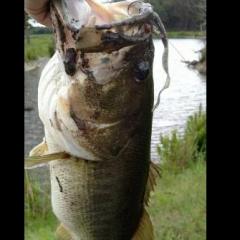Time on the water is the most important thing.
More specifically time on the right water, in the right areas, with the right lures.
Choosing the right body of water is the most important part, you can't catch what isn't there.
Clear Lake and the Cal Delta obviously have big fish, they both put out many double digit fish each year. So, you are in the right body of water, I don't believe there is a change that needs to be made there. However, research on which lakes in your area are putting out the most or biggest fish never hurts. Both the California Delta and Clear Lake are world-renowned fisheries that get a lot of pressure. Because of that smaller, lesser-known bodies of water may actually have a better chance of yielding a big fish.
Then you need the right area, big fish tend to congregate, and a lot of time schooling fish will be divided by size and bigger fish will stay with bigger fish and small with small. This holds true even for fish that prefer to stay tight to cover and ambush their prey. Bass are somewhat territorial and many times a large bass will not tolerate a smaller one in its school, or on the same piece of structure. Take notes of which areas seem to have the best combination of forage, cover, and depth range.
Also remember what fish you catch in each area and their sizes, even if you aren't catching giants this can still give you a hint as to which area has more sizeable fish. If you catch 50 1-3 Lb fish in an area but none larger than that, then that is likely an area full of smaller fish that size. Likewise, if you catch multiple fish over 3, 5, or 7lbs in an area, then that area likely holds more fish of that size range or larger, as fish in that size range are more able to compete with a larger bass. Catching numbers does not always mean you are in a good area, in any given place there is a specific amount of prey for the bass, smaller fish take up less forage and there can be more of them competing for the same food source. In a spot dominated by larger-sized fish, there will be fewer of them because it takes more food to support each individual fish.
As for lure selection, you generally want to match the overall size, shape, and color of your lure to whatever the forage is. In some lakes, the primary forage will be different for different sizes of fish. One prime example is the trout-stocked lakes in your state. Once fish became large enough to eat those trout, that became the primary food source instead of shad, shiners, minnows, crawfish, or panfish. A similar thing happens in ponds near where I live, bass will get large enough that minnows are no longer worth the effort to catch, and they begin eating a diet mostly composed of golden shiners over 5 inches long. They choose the shiners over bluegill because of the lack of dorsal spines, and their fragility as opposed to bluegill. Those are the same traits that make trout so attractive to bass in Cali, they are a large meal that doesn't put up too much fight and is easy to swallow. Large gizzard shad are another species worth mimicking, especially in the dog days of summer and middle of winter when they commonly have major die-offs and big bass will gorge themselves on dying gizzard shad.







